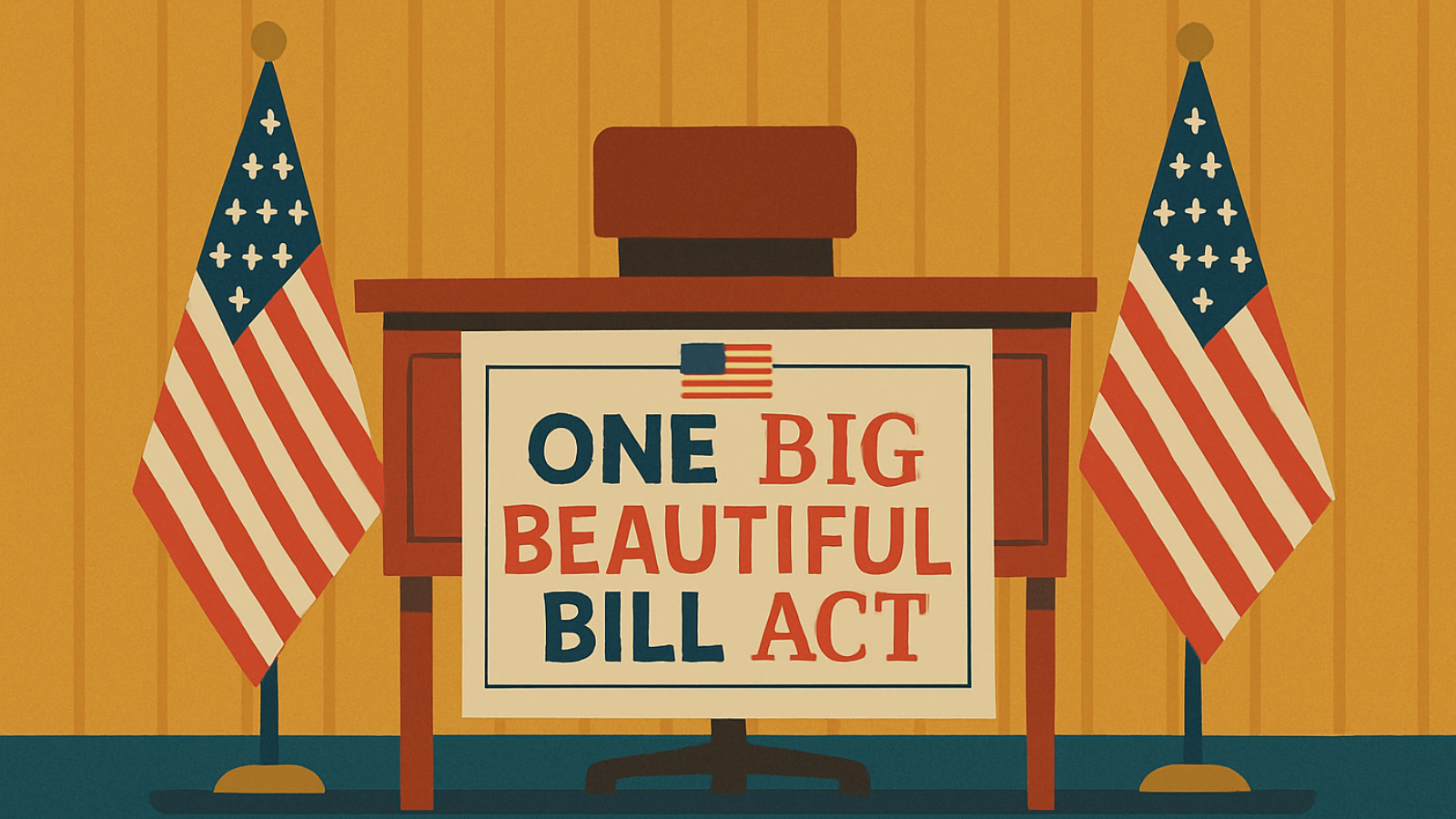This Energy Explained post represents the research and views of the author(s). It does not necessarily represent the views of the Center on Global Energy Policy. The piece may be subject to further revision.
Contributions to SIPA for the benefit of CGEP are general use gifts, which gives the Center discretion in how it allocates these funds. More information is available here. Rare cases of sponsored projects are clearly indicated.
President Trump has ended the federal government’s use of the “social cost of carbon” (SCC), an official estimate of the harms caused by carbon dioxide emissions. His administration claims this metric is too uncertain, logically flawed, and insufficiently grounded in empirical science to guide policy.[1] The move has drawn criticism from top climate policy experts, including Harvard legal scholar Cass Sunstein, who called the SCC a “foundation of national climate policy.”
Given Trump’s history of misrepresentations about climate science and clean energy, this clash between experts and his administration may have a familiar ring. But in the narrow case of the SCC, Trump may have the better argument. While reducing greenhouse gas emissions can prevent huge risks to public health, economies, and ecosystems, these benefits cannot be meaningfully captured in monetary terms, as the SCC purports to do.
The SCC Isn’t Policy Relevant
The Biden administration prioritized assigning a dollar value to emissions reductions to help justify costly federal climate regulations, and a team of economists (including the author) sought to do just that. But the truth is that meaningful estimates of all the ways today’s emissions will affect the world decades and centuries from now are impossible. Climate damages depend on unknowable factors like how economies and technologies evolve over hundreds of years, how warming reshapes those trajectories, and how future welfare is valued.
Some of these limitations are acknowledged. The SCC includes relatively easy-to-measure effects, like changes in heating and cooling costs, but leaves out others that are harder to estimate. For example, whereas scientists can model sea level rise and freshwater scarcity, they lack credible methods to predict how these physical changes will cause migration, conflict, or economic disruptions. Such ripple effects, though important, are therefore excluded from SCC estimates.
If this were the only flaw, the SCC might still serve as a conservative lower bound that is useful for justifying low-cost policies. That’s how the Biden administration defended it: as a “partial accounting” that understates the true costs of climate change.
But there are deeper issues. The SCC relies on extrapolating historical relationships between emissions and damages far into an unprecedented future. As economist Matthew Kahn warns, such extrapolation is “a lousy representation of how an economy featuring diverse people and firms adapts to an [anticipated] threat.” As climate change pushes the world into uncharted territories, relying on past trends to predict the radical adaptations and innovations that will inevitably reshape the relationships between emissions and societal harms in the coming centuries is a futile exercise—and one that economists reject in similar contexts.[2]
Even if it were possible to make credible predictions of climate change impacts, that still leaves unresolved questions, like how to value the societal benefits of avoiding the disproportionate harms climate change will cause to vulnerable communities that cannot afford to prepare or respond. The Biden administration’s SCC is estimated by summing up how much each person (whether rich or poor) will pay to avoid climate damages. Philosopher Paul Kelleher, who recently wrote a book on the SCC, explains how this approach systematically undervalues those with fewer resources[3] and concludes that it yields an “irrelevant” metric that should not guide climate policy.[4]
There are additional reasons why the Biden SCC estimates shouldn’t guide policy. Because there’s no consensus on how to value future generations’ welfare, the SCC estimates draw on historical interest rates to guide discount rate assumptions, even though markets are ill-suited to reflect the ethical considerations inherent to intergenerational tradeoffs. The SCC estimates also do not account for the growing evidence that climate change will influence long-term growth due to the lack of consensus around the magnitude and persistence of these growth effects.
In each case, the imperative to generate seemingly solid numbers for regulatory cost-benefit analyses forestalled fully grappling with the deep uncertainties involved. But it’s not clear that the resulting SCCs have any coherent interpretation. Economists often take pride in valuing policy effects that others consider beyond quantification, but doing so only helps policymakers when meaningful estimates are possible.
Another Path Forward
For the Biden administration, walking away from the SCC would have been difficult. The metric had been embedded in regulatory policy for over a decade and was widely supported by economists. Agencies were sprinting to advance regulations for power plants, vehicles, and industrial emissions, and reopening a methodological debate risked slowing progress.
Now, the Trump administration is rolling back these regulations, with the limitations of the SCC as one justification. While the administration may be right about the SCC, the inability to quantify climate damages is an illogical rationale for dismantling climate safeguards. Unquantifiable does not mean small. While experts cannot precisely estimate the consequences of nuclear war, governments still pursue non-proliferation. People buy life insurance without knowing exactly how their deaths would affect others. Likewise, the absence of precise climate damage estimates is no justification for inaction.
Nevertheless, a future administration that accepts the science of climate change and the need to address it will have to rebuild a federal climate policy strategy in the wake of the Trump administration. It may be advantageous to do so without attempting to reestablish a federal government SCC estimate for at least three reasons.
First, the SCC was always a fragile foundation for policy. SCC models can spit out virtually any number by replacing one reasonable assumption with another. That means politicians or judges can justify virtually any decision by tweaking the assumptions of these models.
Second, falsely precise claims about climate threats undermine the credibility of the rigorous science that underpins legitimate climate concerns — and, in turn, the trust in science that is essential to sustaining climate policies given that people largely cannot observe the link between emissions reductions and avoided future damages.
Third, policymakers need the best evidence about the scale and scope of climate threats as well as the range of other potential benefits of climate actions in order to navigate the very real tradeoffs associated with transformational pathways to net-zero emissions. Focusing on the SCC as a metric for ambition and economic efficiency distracts from pursuing analyses that can offer more valuable and practical guidance.
Were a future US administration to decide not to reconstitute the SCC estimate, it would hardly be an exception The European Union justifies stringent regulations based on climate threats, without assigning them monetary values. In 2009, the United Kingdom abandoned SCC-based appraisals and adopted an approach to valuing the benefits of emissions reductions that aligns the nation’s policies with its ambitious climate goals. The shift, officials explained, was motivated in part by “the considerable uncertainty that exists surrounding estimates of the SCC.” [5]
To be sure, no alternative yields the neat cost-benefit clarity the SCC appears to offer. But that clarity was always a mirage. Governments can acknowledge the limits of their capabilities while still acting decisively to address the dangers that climate change poses.
[1] The Trump administration also appears to attribute the following to the SCC: “by rendering the United States economy internationally uncompetitive, [the SCC] encourages a greater human impact on the environment by affording less efficient foreign energy producers a greater share of the global energy and natural resource market.” This passage illogically conflates the use of the SCC with the implementation of federal climate regulations and then makes unsubstantiated claims about the negative consequences of those regulations.
[2] Since Nobel Laureate Robert Lucas’ seminal work in the 1970s, economists have rejected assumptions that human behavior remains stable when the environment in which they operate fundamentally changes.
[3] As explained in a prior CGEP commentary, “distributional weighting” is an alternative way to estimate an SCC. This approach attempts to account for these concerns by converting estimates of monetary outcomes for individuals (their willingness to pay) into estimates of well-being using a “social welfare function,” which can incorporate concerns about total wealth and the distribution of wealth. While arguably correcting for an important source of bias in SCC estimates, distributional weighting may add to the deep uncertainties surrounding SCC estimates because there is no consensus about either the use of distributional weighting or the ways to calibrate a social welfare function when it is used. The Biden administration noted that using distributional weighting would make its SCC estimate inconsistent with other elements of the regulatory cost-benefit analyses in which the SCC estimates are used (p. 167).
[4] In his book, Paul Kelleher thoroughly explains the various objections to the approach to benefit-cost analysis that relies on simply summing individuals’ willingness to pay for a policy change. Echoing Arrow et al. (1995), Kelleher notes “there is no good reason to care about merely potential” compensation for those harmed by policy changes. As described in a prior CGEP commentary, there are additional reasons why this approach is unsuitable to the context of valuing the benefits of greenhouse gas emissions reductions. Note that Kelleher’s statement about the irrelevance of the SCC is specifically aimed at the limitations described in this paragraph; he does not make this claim about distributionally weighted SCCs, as described in the previous endnote.
[5] Stern et al (2022) suggests the US federal government shift to a similar target-based approach to carbon valuation. It is worth noting that the UK’s shift was also motivated by the passage of the UK Climate Change Act of 2008, which included legally binding emissions-reduction targets. The United States has no similar climate change law, and there may be little likelihood of binding emissions reductions targets any time soon. While this is no excuse to continue incorporating an unquantifiable number into regulatory cost-benefit analysis, the lack of federal climate legislation may be a political and legal obstacle to the United States adopting a similar target-based approach to carbon valuation, at least in the near-term.











